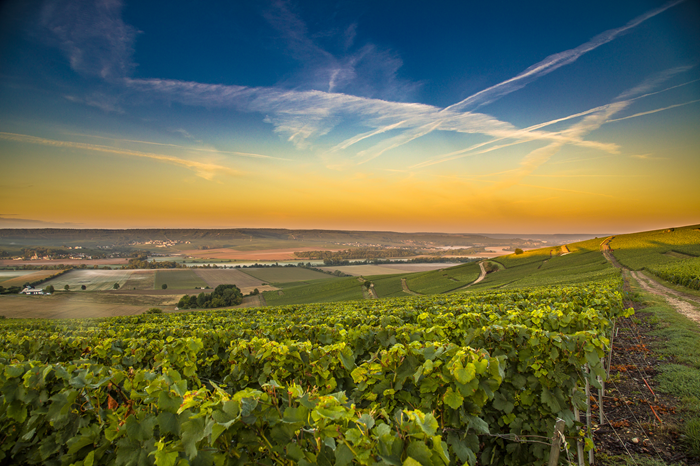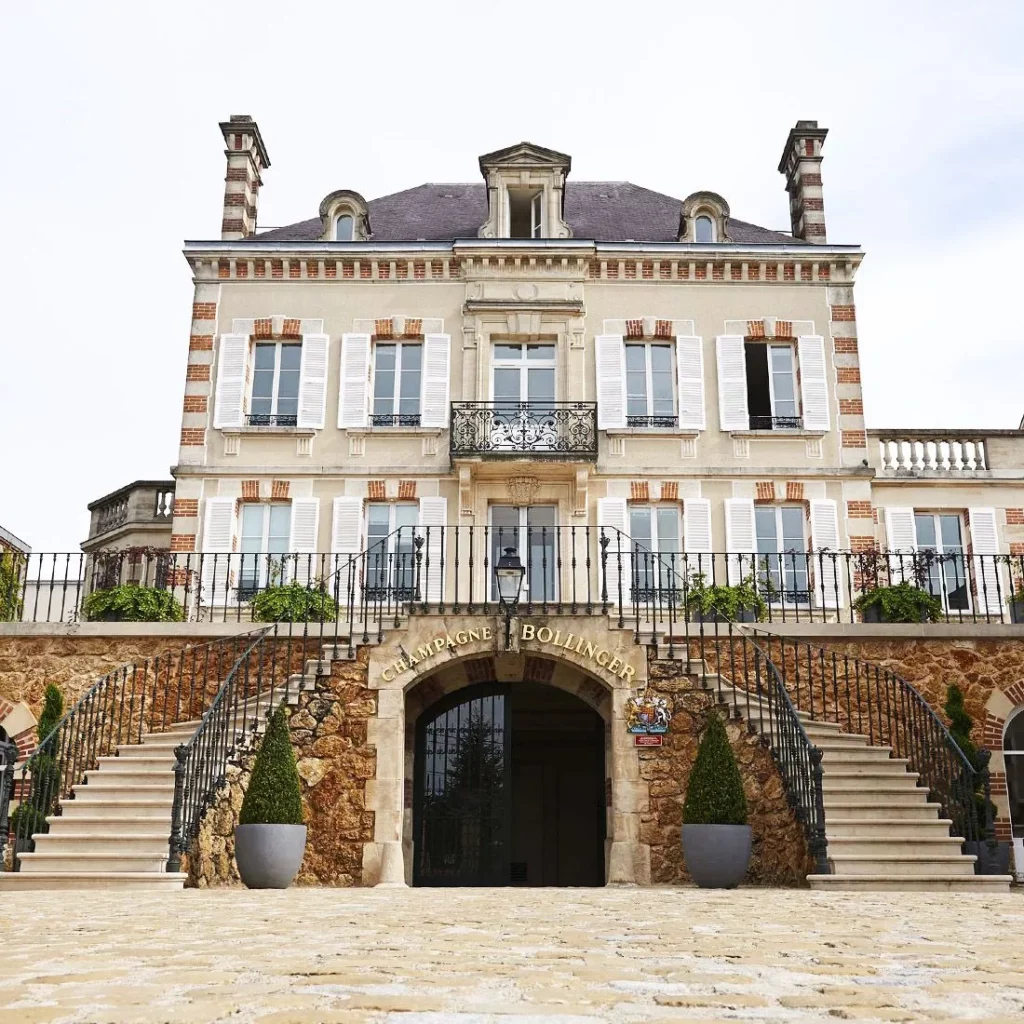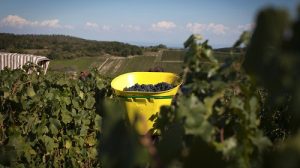
You’ve certainly already noticed that a number of renowned Champagne houses have names with a distinctly Germanic ring to them. This is because the history of Champagne reflects broader history – including rivalries, reconciliations and the pursuit of excellence – with iconic brands such as Heidsieck, Krug, Bollinger and Deutz tracing their origins to the other side of the Rhine.
Germany, France, Champagne: A shared history
Commercial ties between Germany and the Champagne region date back to the Middle Ages when merchants from across Europe flocked to the famous Champagne fairs. These major trade gatherings, particularly in the city of Troyes, facilitated exchanges between French regions and the Holy Roman Empire. With the rise of Champagne in the 17th century, connections with Germany grew even stronger. Countless bottles were exported to royal and aristocratic courts in German-speaking regions, where this rare sparkling wine captivated the elite. King Frederick William IV of Prussia is a prime example, importing vast quantities of Champagne and even demanding to exclusively be served this sparkling beverage, dismissing local wines deemed too rustic. By the late 18th century, German entrepreneurs began to recognise Champagne’s potential and decided to establish themselves in the region. The first to make the move was Florens-Louis Heidsieck, who founded Maison Heidsieck in 1785. His success inspired other German entrepreneurs, who settled in the region to establish their own Champagne houses during the 19th century. Among them were legendary figures who would leave an indelible mark on Champagne’s history, including Johann-Joseph Krug, William Deutz, and Jacques Bollinger. These newcomers to Champagne fell into two distinct categories. Some were the sons of German winegrowers, already skilled in winemaking, while others were merchants and businessmen who recognised the immense potential of this French region.
German Champagne expertise: Precision, Innovation and Excellence
In Germany, white wine production – particularly with Riesling – was already highly developed, with precise techniques designed to preserve the freshness and aromatic purity of the grapes. By the 20th century, German winemakers had started using stainless steel vats to retain the grapes’ freshness and vibrancy. This innovation made its way to Champagne, where stainless steel vats became a game changer offering a dual advantage. Not only did they preserve the purity and freshness of aromas, but they also allowed for meticulous temperature control. Some Champagne houses, such as Bollinger, resisted this revolution. Even today, they continue to age their wines in oak barrels, expressing a completely different aromatic complexity. Johann-Joseph Krug, meanwhile, introduced the concept of precise blending, which involves combining wines from different harvest years to ensure consistent quality. This approach, now central to Champagne production, delivers the purest expression of each Champagne house’s style, year after year. The contribution of the German-based houses extended beyond the production of Champagne to innovation and marketing. With their keen understanding of international consumer preferences, these houses successfully positioned Champagne as a symbol of luxury and elegance. Maison Mumm set a precedent in this regard by introducing its famous Cordon Rouge in 1876, inspired by the ribbon of the French Legion of Honour. This ribbon became an iconic symbol enabling consumers to instantly identify the brand, while reinforcing its prestigious image. Similarly, Bollinger cemented a worldwide reputation capitalising on their association with 007’s exploits. Thanks to their expertise in international trade and their command of multiple languages, German merchants played a pivotal role in the international growth of Champagne beyond France’s borders. Bollinger, for instance, became the official supplier to the British court in 1884, while Mumm successfully entered the Russian market, through its strong presence in Saint Petersburg.
From German identity to Champagne legacy
The integration of German merchants and producers into Champagne did not happen overnight. In the 19th century, their presence was seen as a commercial asset that contributed to the region’s development. However, the geopolitical tensions of the 20th century sometimes placed them in a delicate situation. When German families settled in Champagne in the 19th century, they quickly sought to integrate into the local economic and social fabric. Many Frenchified their names over generations, marrying into Champagne families and adopting French customs and first names. When the war broke out in 1914, the Champagne region became a strategic frontline. The city of Reims was bombarded, and several Champagne houses suffered extensive damage. The German occupation in some areas and the atrocities committed by the Kaiser’s army fuelled anti-German sentiment in France, placing Champagne houses with German names in a difficult position. Some were met with local suspicion and had to reaffirm their allegiance to France. World War II contributed to making the situation even worse. During the Occupation, the Champagne region was under German control, and some Champagne houses were commandeered to supply wine to the Nazi army. After the war, some houses with German names were subject to reprisals or acts of defiance from the French. Some businesses even underwent leadership changes. Nevertheless, several families managed to navigate this period by focusing on their Champagne heritage rather than their German roots. Today, these tensions have dissipated, and German-origin Champagne houses are fully recognised as part of France’s cultural and historical heritage.
Deutz, Krug, Bollinger: German houses turned Champagne icons

The Champagne houses founded by Germans are inseparable from the region’s heritage. They successfully epitomise a tradition of excellence that continues to evolve.
Maison Heidsieck is a prime example of the German influence in Champagne. Established in 1785 by Florens-Louis Heidsieck, a merchant from Westphalia, it is one of the oldest Champagne houses. In the 19th century, after he passed away, the house was divided into three separate entities: Piper-Heidsieck, Heidsieck & Co Monopole and Charles Heidsieck, each developing its own style and unique identity.
Champagne Deutz quickly gained a reputation for its exacting standards and refined approach to Champagne. From the outset, Deutz distinguished itself with Germanic precision in grape selection and winemaking management. The house crafts exquisite Champagnes primarily from Pinot Noir and also excels in its mastery of Chardonnay producing remarkable Blanc de Blancs. To this day, Deutz remains renowned for the finesse of its Champagnes, with prestigious cuvées such as Amour de Deutz, embodying the elegance and complexity sought by its founders.
If one Champagne house exemplifies the meticulous craftsmanship and ambitious vision of German merchants, it’s definitely Krug. Founded in 1843 by Johann-Joseph Krug from Mainz, this house has always taken a unique approach to Champagne. Krug pioneered extended ageing for its cuvées, imparting unmatched depth and richness to its wines. It is also one of the only Champagne houses to produce exclusively a prestigious range. Krug is the only Grande Marque (big brand Champagne houses with international renown and a long-standing history) that ferments all its Champagnes in small oak barrels, a delicate process that yields intense, rich, and complex aromas. Today, Krug Grande Cuvée is regarded as one of the finest non-vintage Champagnes in the world.
Founded in 1829 by Jacques Bollinger, a German who settled in Champagne, Maison Bollinger has established itself as a benchmark for aficionados of powerful, vinous Champagnes. Bollinger takes a unique approach with a focus on Pinot Noir and long cellar maturations. As mentioned earlier, Bollinger is also one of the few houses still using oak barrels for part of its vinification, adding an extra layer of complexity to its cuvées. Its unwavering commitment to quality has made Bollinger a reference in the world of premium Champagne.
The history of Champagne is deeply intertwined with German influence, which played a crucial role in its global expansion. From viticultural expertise to the creation of prestigious brands, German merchants left an indelible mark on this French heritage. Today, these houses of German origin fully embody Champagne excellence – far beyond the borders of the Champagne region, Germany, or France. Quite an extraordinary winemaking legacy!



